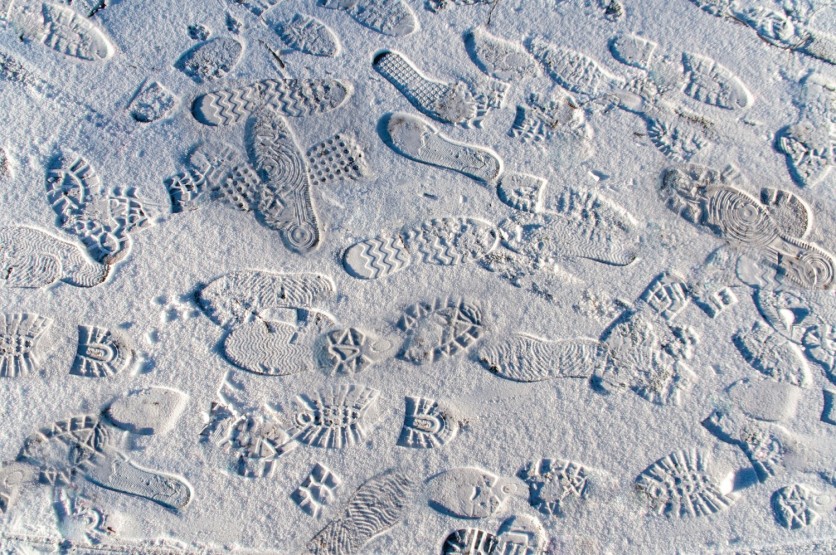The quest to uncover our ancestors' first fashion footwear has led archaeologists to an intriguing path. Traditional physical evidence of ancient shoes has long since faded in history due to their perishable materials, leaving researchers to rely on alternative methods.
Ichnology, the study of fossilized tracks and traces, emerges as a significant player in this quest. A group of researchers working under the Cape south coast ichnology project in South Africa have been diligently working on this challenge, sifting through over 350 vertebrate tracksites along the Cape coast over the past 15 years.
Upon analysis, they found that some tracks made by humans indicate that they were either walking or jogging barefoot. Interestingly, the team also noticed some similar trackways that appeared well-preserved but without toe impressions. Recognizing the scarcity of research on early footwear, the researchers delved deeper.

Early Shod Hominins
Their approach involved a comprehensive examination of global research, seeking clues from milestones in human technological advancement, like the emergence of bone tools capable of crafting footwear by sewing.
According to an article by Charles Helm, a research associate from the African Centre for Coastal Palaeoscience of the Nelson Mandela University, published in The Conversation, this investigation revealed two prime places comprise footprint evidence of early shod hominins: western Europe and the Cape coast of South Africa.
To bolster their findings, the team embarked on a hands-on endeavor, recreating footwear that might have been worn during the relevant time period, which spans approximately 70,000 to 150,000 years ago.
Their recently published work in the journal Ichnos pointed to at least three track sites along the Cape South Coast that could bear shod humans' imprints. Helm noted that a fourth site unfortunately rapidly deteriorated in quality and slumped into the sea.
The existing record of shod trackmakers is notably sparse, with only four sites, all from western Europe, being posited as older than 30,000 years, including a Neanderthal site.
While the evidence remains inconclusive, these discoveries hint at the early development of cognitive and practical abilities in southern Africa.
Turning attention back to the Cape coast, the dune surfaces our ancestors once traversed are now solidified as aeolianites, preserving these ancient tracks.
In addition to studying museum specimens and rock art depictions, the researchers drew inspiration from the sandals utilized by the indigenous San people in the Kalahari desert. The gathered knowledge guided the creation of diverse footwear types tested along Cape South Coast trackways.
From these experiments, Helm noted that "it became clear that an open, hard sole design, with tracks made on moist, moderately soft but nonetheless cohesive sand, best fitted the findings at the three fossil tracksites."
70,000 to Over 130,000 Years
Hominin track identification leans on toe impressions, which are absent in footwear tracks. Rigorous scrutiny was essential to differentiate genuine imprints from potentially altered ones due to some factors like erosion or poor preservation.
At three sites, distinct track margins and approximate hominin footprint outlines were crucial. Marks from strap attachments held significant value.
While the three sites have not been dated yet, neighboring dated places hint at ages spanning 70,000 to over 130,000 years. Although suggestive, the evidence isn't conclusive, as noted by Helm.
The quest persists for well-preserved sites with extensive trackways for in-depth analysis. This research raises compelling questions about early footwear adoption. With the ability to fashion complex clothing using bone tools, footwear seemed a logical progression.
The findings indicate that ancient humans deliberately developed footwear to avoid suffering lacerations if foraging on the Cape Coast's rugged terrain barefoot.
In the Middle Stone Age, an infected laceration could be fatal, potentially prompting sporadic footwear use for protection. Other possible reasons to wear footwear include protection from heat and cold.
Related Article : Archaeologists Unearth a Shining Bronze Age Sword in Germany

ⓒ 2025 TECHTIMES.com All rights reserved. Do not reproduce without permission.




